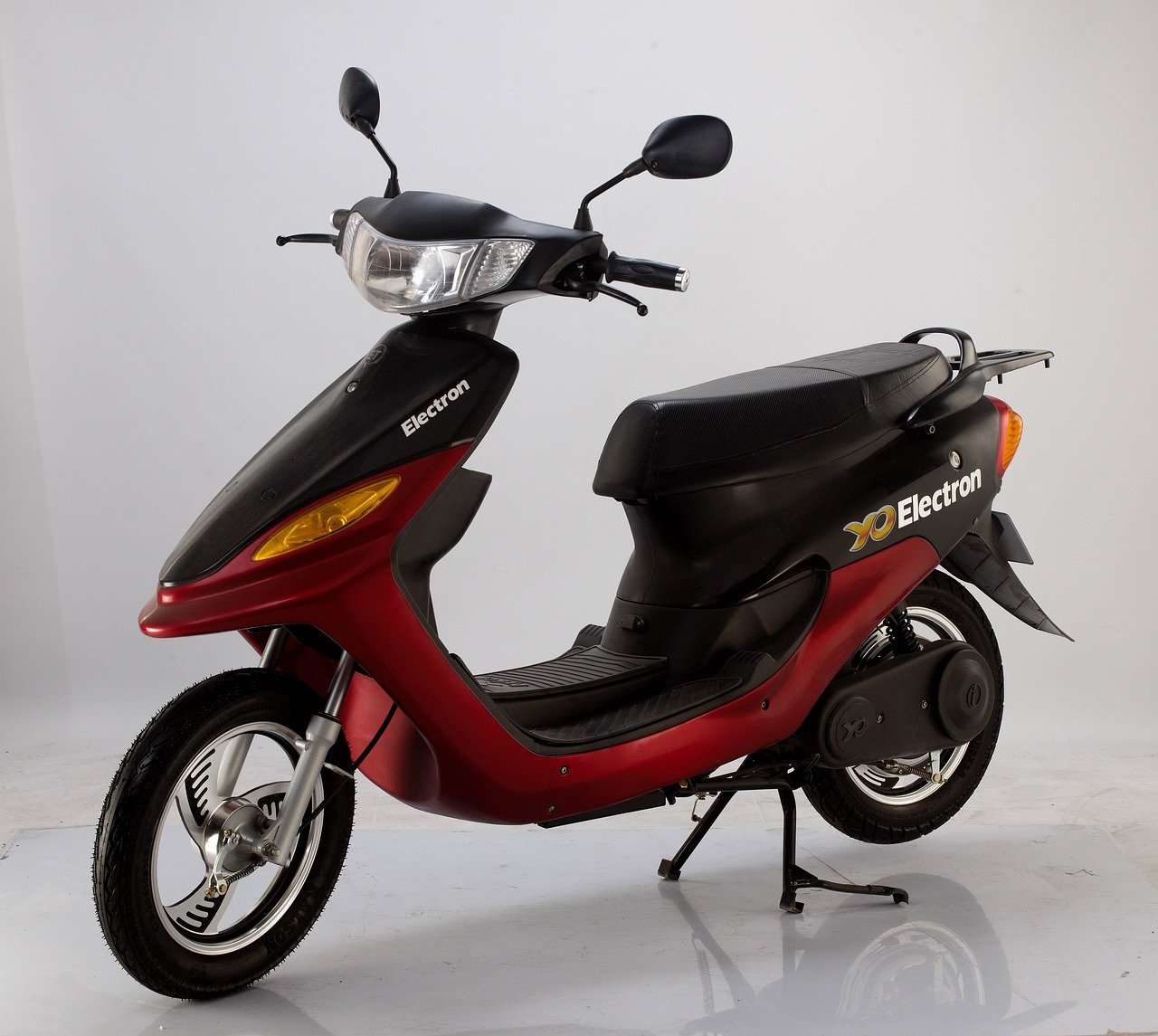
What Sets Electric Bikes Apart from Conventional Bicycles?
In this era of increasingly streamlined designs, electric bikes have become nearly indistinguishable from traditional pedal-powered bicycles to the untrained observer.
The primary distinctions between an electric bike (e-bike) and a standard bicycle are the inclusion of a motor, a battery, sensors, and controls. When riding an electric bike, you still perform essential tasks such as steering, braking, and pedaling, much like you would on a regular bicycle. However, the electric bike’s motor comes to your aid when you require an extra push, significantly simplifying uphill climbs and covering extended distances.
Moreover, electric bikes tend to be heavier and capable of attaining higher speeds compared to traditional bicycles. Consequently, it remains crucial to employ proper braking techniques, maintain keen hazard awareness, and exercise caution when navigating corners for a safe and enjoyable riding experience.
Considering an Electric Bike? Here Are the Pros and Cons:
Pros:
- Ease of Riding: Electric bikes are easier to ride than traditional bicycles, thanks to their motorized assistance.
- Versatile Terrain Handling: They can tackle a variety of terrains, making them suitable for different riding conditions.
- Assistance Levels: Electric bikes offer various levels of assistance, providing support when riding uphill or feeling fatigued.
- Inclusivity: You don’t need to be exceptionally athletic or fit to use them, as many models cater to elderly individuals or those with physical disabilities that may hinder the use of a regular bicycle.
- Eco-Friendly: Electric bikes are environmentally friendly, emitting no harmful pollutants and reducing your carbon footprint.
- Promote a Healthy Lifestyle: They encourage physical activity while still offering assistance, promoting a healthier way of life.
Cons:
- Cost: Electric bikes can be relatively expensive, requiring a higher initial investment than conventional bicycles.
- Maintenance: They demand semi-regular maintenance to keep the electric components in good working order.
- Weather Sensitivity: Not all e-bike models are resistant to rain, which may limit your riding in inclement weather.
- Regulations: Some electric bikes may not be permitted for public use in certain regions, such as Australia.
Electric bikes are particularly beneficial for individuals who:
- Reside in Hilly Areas: Electric bikes excel in hilly regions where the motorized assistance helps conquer inclines.
- Have Limited Fitness: They cater to those with lower fitness levels, ensuring an enjoyable riding experience.
- Experience Limited Mobility: Electric bikes provide a mobility solution for individuals with physical limitations.
- Seek Cost-Efficient Commuting: They enable a cost-effective and eco-friendly commuting option, allowing for longer or less flat routes.
- Prefer a Sweat-Free Commute: If you wish to avoid getting sweaty during your commute, especially when going to work.
- Want to Ditch Public Transport: Electric bikes offer an alternative to public transportation, providing greater personal control over your daily commute.
Key Considerations for Choosing Electric Bikes
When contemplating the selection of an electric bike, several essential factors warrant your attention:
1. Legal Compliance: It’s crucial to check and understand the applicable federal and local laws governing the use of electric bikes in your region. Complying with these regulations ensures a trouble-free and legal riding experience.
2. Riding Purpose: Determine your primary use for the electric bike. Are you commuting to work, seeking adventure, or simply looking for a leisurely ride? The intended purpose will influence the type and features of the e-bike you need.
3. Battery Life: Evaluate the battery’s capacity and expected range. This factor is especially important if you plan to use the e-bike for extended journeys. Indeed, a longer battery life implies that you will need to recharge your electric bike less frequently, enhancing the convenience and usability of the e-bike for longer rides and extended journeys.
4. Motor Type and Power: Electric bikes come with various motor types and power levels. Consider your terrain and riding preferences when choosing between hub motors and mid-drive motors, as well as the motor’s wattage.
5. Pedal-Assist Levels: Check the availability of different pedal-assist levels, which allow you to control the level of assistance provided by the motor. This feature is crucial for tailoring your riding experience.
6. Frame Design: Electric bikes come in various frame styles, including step-through, mountain bike, and cruiser. Select a design that aligns with your comfort and riding style.
7. Suspension: If you plan to ride on rough terrain or desire a smoother ride, consider an e-bike with appropriate suspension, such as front forks or full suspension.
8. Brakes: Ensure the e-bike is equipped with reliable braking systems, as safety is paramount. Disc brakes, for instance, offer excellent stopping power.
9. Weight Capacity: Check the maximum weight capacity of the e-bike to ensure it can accommodate your weight and any additional cargo you may carry.
10. Test Ride: Whenever possible, take the e-bike for a test ride to assess its comfort, handling, and fit. Engaging in a hands-on experience can be instrumental in making a well-informed decision when choosing an electric bike. It allows you to personally assess factors like comfort, handling, and fit, providing valuable insights that guide your selection process.
11. Brand and Reputation: Research and consider the reputation of the e-bike manufacturer. It’s often the case that well-established and reputable brands tend to provide higher-quality products and better customer support. Choosing a trusted brand can enhance your overall e-bike ownership experience, ensuring you receive a reliable and responsive service when needed.
12. Budget: Determine your budget and explore e-bike models within your financial range. Consider long-term cost implications, such as maintenance and accessories.
By addressing these considerations, you can make an informed decision when selecting the electric bike that best aligns with your needs and preferences.
Here are various types of electric bikes and important considerations.
Types of Electric Bikes
Folding Bike: A folding e-bike can be conveniently folded in half, making it more compact and easier to store in a car or bring onto public transport.
Step-Through Bike: Also known as a ‘step-thru’ bike, this type features a curved frame that allows riders to step over it when mounting and dismounting.
Low-Step Bike: A low-step e-bike has a frame with a low top tube, making it easy for individuals with mobility issues or difficulty swinging their leg over a traditional bike frame.
Step-Over Bike: This type of bike is recognized by its traditional diamond or triangle frame and is the most common bike frame style.
Motor:
- Electric bike motors typically range from 200 to 250 watts, as anything more powerful may not be legally ridden on public roads in your local area.
- E-bikes provide assistance while pedaling, and the level of assistance depends on the chosen setting.
Levels of Assistance:
- Low: Requires more effort and energy from the rider, making it ideal for those seeking a fitness challenge.
- Medium: Strikes a balance between low and high levels of assistance, providing a moderate challenge.
- High: The e-bike does most of the work, requiring minimal effort from the rider to keep it moving.
Battery:
- Battery life is a critical consideration. Most electric bikes are equipped with lithium-ion batteries ranging from 8Ah to 28Ah.
- A higher Ah rating theoretically allows the e-bike to travel a greater distance on a single charge. However, real-world range can vary due to factors like rider weight, pedaling speed, wind conditions, terrain, and assistance level.
- Pay attention to the advertised range of an e-bike, but keep in mind that manufacturer estimates are often generous. The actual range depends on multiple variables, including the weight of the rider, pedaling intensity, wind conditions, terrain, and the assistance level used during the ride.
Speed:
- Electric bikes can achieve higher speeds than standard bicycles due to the motor’s assistance. In public, you can ride an e-bike with electric assistance up to 25 km/h. However, this speed limitation means you might not keep pace with traffic.
- Some e-bikes have the potential to go faster, but legal restrictions generally dictate a maximum assisted speed of 25 km/h. You can pedal faster than this limit without motor assistance, such as when descending hills.
Weight:
- Test-riding an e-bike in a store can help you gauge its weight and determine your preference. If you plan to use the bike for commuting, a lighter model may be preferable for easier handling and transport.
- When purchasing an electric bike online, estimating the final weight can be challenging, especially after adding optional accessories like lights, a larger battery, panniers, mudguards, racks, and more. Consider reaching out to the manufacturer to get a weight estimate based on your customizations before finalizing your purchase.
Intended Use:
- When selecting an electric bike, it’s important to take into account your intended use. For commuting, ensure it can handle various weather conditions if you live in a rainy area.
- If using the bike for sports or recreation, an electric mountain bike may be suitable. These bikes are designed for rough terrain, including dirt tracks and steep hills. You can choose between hardtail and full suspension electric mountain bikes.
- Hardtail: No rear shock, better for climbs and smooth trails, lightweight and efficient for pedaling, but offers less shock absorption.
- Full Suspension: Equipped with front and rear shocks, offering better stability over bumps and during descents, versatile, and quicker on challenging trails.
Puncture-resistant tires to reduce flats.
Features of Electric Bikes
Electric bikes often come with features that enhance usability and safety. These may include:
- LCD screen for adjusting power levels.
- Throttle for motor activation without pedaling (which consumes more battery).
- Front and rear lights for nighttime visibility.
Cost and Worth of Electric Bikes
Electric bikes typically come at a price. The higher price can offer good quality bikes with decent batteries and durable components.
The investment in a quality electric bike is worth it if you plan to cycle regularly and make use of the pedal-assist feature.
Additional Costs: Be aware of potential additional costs, such as a battery charger and optional extras you may choose. Additionally, budget for servicing your bike to maintain bike components and ensure their longevity.
Here are the top selections of electric bikes.
TotGuard Electric Bike, Electric Bike for Adults, 26" Ebike 350W Adult Electric...
Oraimo Electric Bike for Adults,350W BAFANG Motor(Peak 500W), 4A 3H Fast Charge,...
- 3 Hour Fast Charging: Charge your battery in just 3 hours with the 4A standard charger, either directly on the bike or by removing the battery. Enjoy a quick 7-mile ride after just 15 minutes of charging while you take a break
- 3 Hour Fast Charging: Charge your battery in just 3 hours with the 4A standard charger, either directly on the bike or by removing the battery. Enjoy a quick 7-mile ride after just 15 minutes of charging while you take a break
- UL Certified Li-ion Battery: Experience freedom on the road with a 36V 13Ah large capacity li-ion battery that offers a pure electric mode range of 28-35 miles and a pedal-assisted mode range of 28-45 miles
- 350W Bafang Motor: Take on any terrain with ease with the 350W Bafang motor that reaches speeds of up to 20mph, making climbing easier.
- Ergonomic Design: Enjoy a comfortable ride with the electric bike's front fork and airbag saddle design, and feel secure with the mechanical disc brakes for added safety.
- Assembly & Customer Services: The electric mountain bike comes with a 12-month warranty and is 85% pre-assembled with instructions and tools included. Contact the US local call center for any assistance.
- Your Safety Comes First: Our commitment to safety has been recognized by SGS through certifications UL 2271 (for Li-ion battery) and UL 2789 (for the whole electric bike)
Exerpeutic 2000M Motorized Electric Legs and Arms Pedal Exerciser - Mini Exercise...
& Free shippingSOHAMO A1 Mini Electric Bike, Foldable EBike 14'' with 22MPH, 400W Brushless...
- 【High-Capacity Lithium-Ion Battery】The battery shows off a pull-out design for flexible charging. Weighing only about 3.5kg, this removable battery is perfectly placed under the seat of the foldable electric bike. 36V 10Ah of abundant power brings long-lasting and powerful energy output, with an electric range of up to 25 miles so you can travel freely and explore impromptu journeys to your heart's content
- 【High-Capacity Lithium-Ion Battery】The battery shows off a pull-out design for flexible charging. Weighing only about 3.5kg, this removable battery is perfectly placed under the seat of the foldable electric bike. 36V 10Ah of abundant power brings long-lasting and powerful energy output, with an electric range of up to 25 miles so you can travel freely and explore impromptu journeys to your heart's content
- 【Powerful Brushless Motor】Using the latest technology to provide strong power output, you can ride this mini E bike in different conditions. Every time you accelerate, it's a different ride, and the variable road sections are easy to pass through. You'll feel like you're flying free on the open road. Enjoy every ride with this bike's whisper-quiet operation
- 【Shock Absorber and Disc Brake】The shock absorber system of our E bikes reduces bumps and provides more comfort during rides. The foldable bike has front shock absorber. The high-quality disc brakes and lighting system(Configured with 2 lights and a reflector, this only we can do) can fully protect you and make your rides safer
- 【A Comfortable Ride】Suited for riders 4'8" to 6 tall (maximum weight of 220lbs), the seat of this electric folding bike is adjustable, just like the handlebars. This enables riders of varying heights to find their ideal position when riding these Ebikes for adults, ensuring total comfort on the saddle throughout their journey
- 【Easy Folding】The lightweight alloy frame and tightly articulated body make the folding electric bike's visual appearance simple, spacious, and full of dynamism. The whole bike can be folded in three places, stretching freely and easily fitting into the trunk and in and out of the elevator, showing off its static mechanical art. Handling this bike for city commuting, outdoor leisure, sports, and fitness is easy
- 【Professional After-sales Service】local warehouse shipping with fast timeliness. It is our goal to provide customers with high quality products and excellent service. The technical department solves your problems





















































































